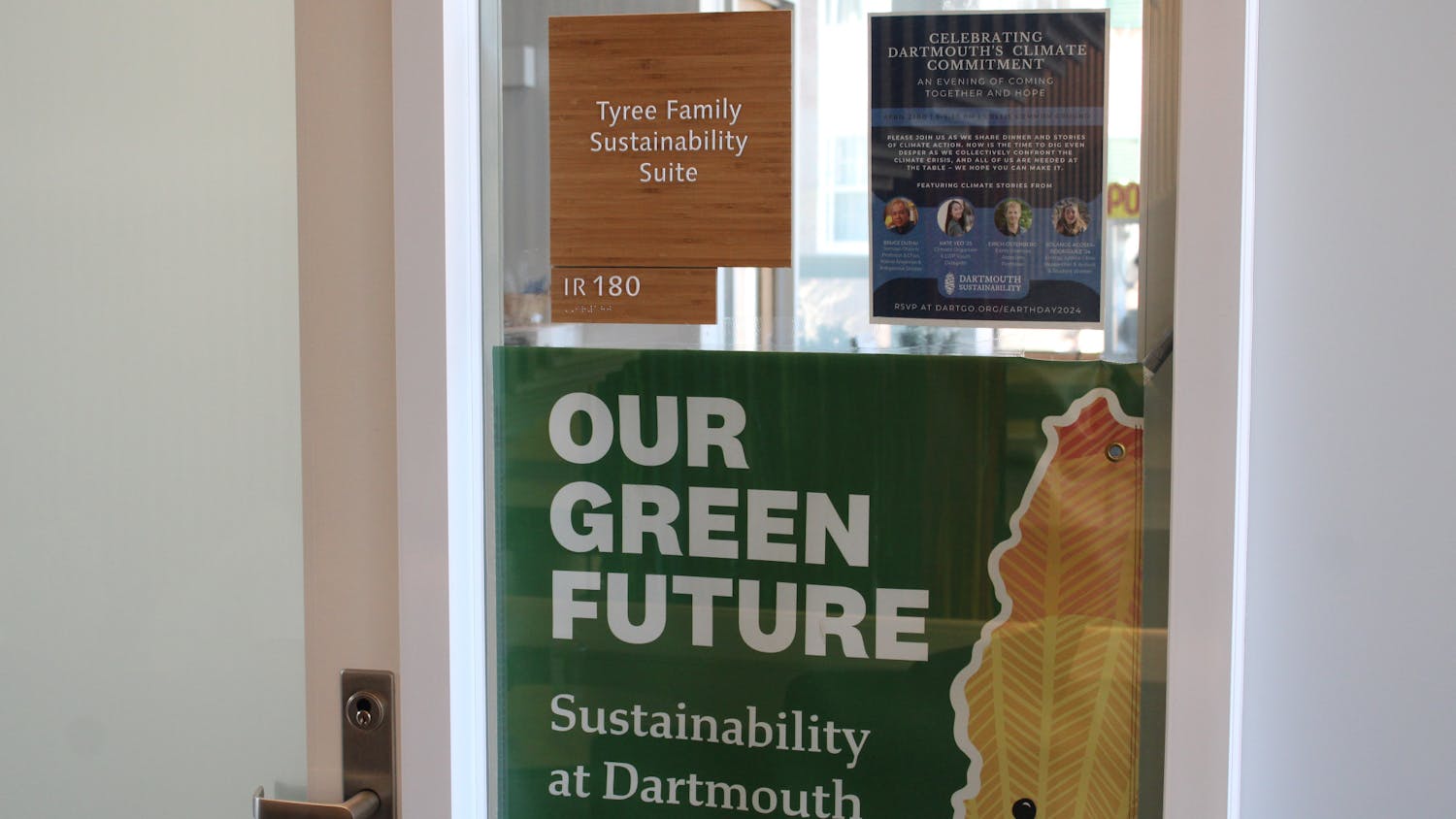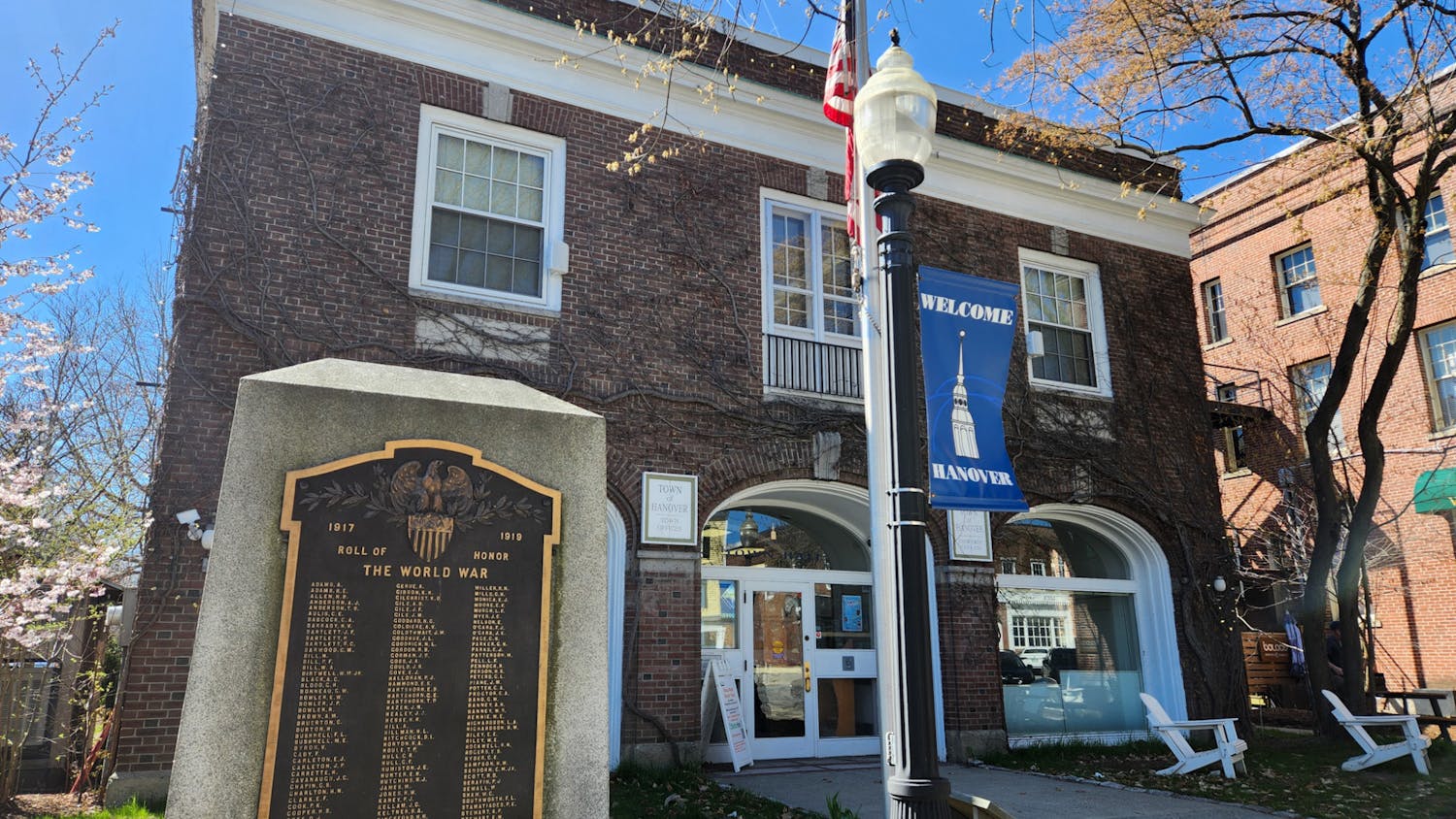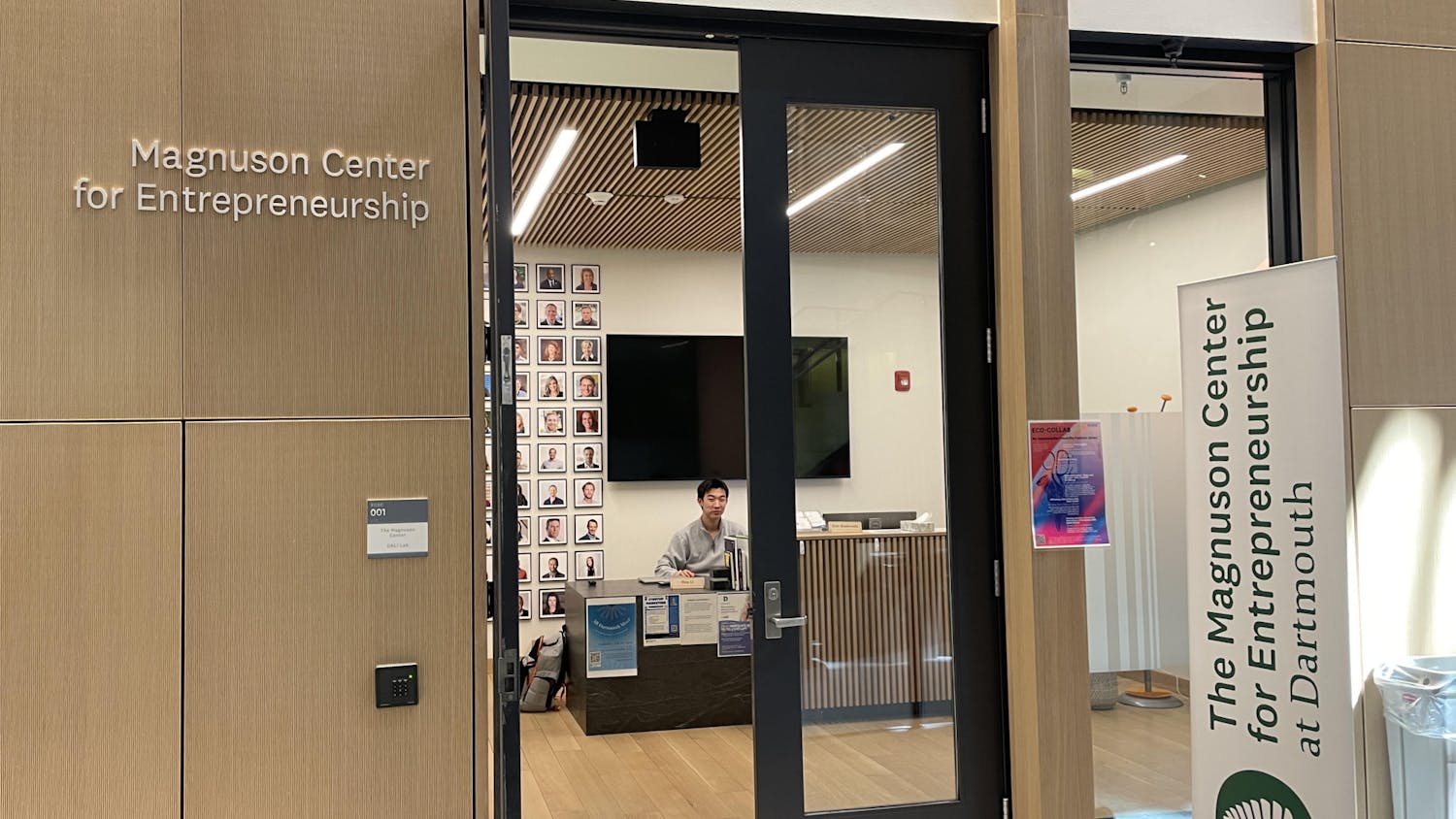College President Phil Hanlon announced on Sept. 26 that the controversial Hovey Murals would be moved to an off-campus Hood Museum of Art storage facility following a recommendation submitted by the Hovey Murals study group. The Hovey Murals, consisting of four painted scenes and located in the basement of the Class of 1953 Commons, were painted in the late 1930s by Walter Beach Humphrey, Class of 1914.
According to “The Hovey Murals at Dartmouth: Culture & Context,” a collection of essays complied by College faculty that was published in 2011, the murals depict Eleazar Wheelock, the founder of the College, “entering the North Woods with a five-hundred-gallon barrel of rum” before meeting a Native American chief. The murals then show the Native American leader becoming one of the College’s first undergraduates. Humphrey painted the murals in a former faculty dining facility known as Hovey Grill, located in the basement of the former Thayer Dining Hall, now known as the Class of 1953 Commons.
The murals have been criticized in the past for their depiction of Native American men and women, some of whom are portrayed in a half-naked state. One of the women is depicted as reading Wheelock’s copy of “Gradus ad Parnassum” upside down.
In the early 1970s, College President John Kemeny’s re-commitment to the College’s mission to educating Native Americans, as well as the coeducation of the College, led to student protests and increased criticism over the content of the murals. In 1979, the room that housed the murals was closed following further protests from the student body. Four years later, the murals were covered up with removable panels. Currently, they are closed to the general public and can only be used for teaching purposes by faculty and the Hood Museum of Art.
The Hovey Murals study group, co-chaired by deputy director of the Hood Museum Juliette Bianco ’94 and Native American studies professor N. Bruce Duthu ’80, deliberated through the spring and summer before providing interim provost David Kotz ’86 with a finalized report sometime in August, Kotz said. He then presented the report to senior members of the administration, and Hanlon ultimately decided to accept the group’s recommendation in early September, he added.
Before Hanlon’s decision was announced, Kotz also met with members of Native Americans at Dartmouth and the Native American Council to communicate the news to them personally. He also invited Native Americans at Dartmouth and the Native American Council to consider what they would like to do with the space, if anything, “in terms of a cleansing ceremony or the like,” Kotz said.
He remarked that the removal of the murals was likely to take place in December to “minimize disruption” in the College’s largest dining facility.
“The ultimate use of this space is yet to be decided,” Kotz said. “We’ll renovate it into something, but exactly what that will be is still an open question.”
Regarding the murals themselves, Kotz called them an integral part of the College’s history. Kotz added that as “ugly as [the murals] might be, and as embarrassing as they are as a part of our history,” that it was important that students, faculty and future scholars be able to understand and study the murals firsthand.
“I hope [their removal] brings a certain amount of healing to the communities that have found these murals to be so offensive,” Kotz said. “Although it’s certainly not solving the broader challenges that we face on campus or in society, I think it’s an important step in that direction, and I look forward to, personally anyway, doing anything I can to help make that as smooth and as effective as possible.”
Duthu said that in finalizing its decision, the study group considered the views of the various constituent groups they spoke with, which included members of the administration, alumni and students. Furthermore, the group consulted with an art conservator to determine the feasibility of moving the murals in the first place. The Hovey Murals are not pure murals, but rather painted canvases that have been glued to the walls.
According to Duthu, a few of the key considerations that the group also considered were continued access to the murals for “critical study,” the feasibility of removing the murals from their current locations and fixing any damage that may occur in the process, and the “longstanding sense of objection” that various community members had expressed over the murals.
As part of her work on the group, art history professor Mary Coffey, who was chosen to be on the committee based on her longtime study of the murals, said she primarily consulted with faculty members who had utilized the murals as teaching material, as well as members of the art history department. In talking with many of these faculty members, Coffey noted one area of concern: that the College would potentially whitewash its history.
“Their overriding concern was not that the murals stay in-situ, or that the murals were great art or that they needed to be around because they were part of Dartmouth’s history or tradition, but rather that they didn’t want their removal to be a mechanism for obliterating any kind of public memory of this part of the College’s history,” Coffey said.
Coffey said that while there has been longtime activism by Native students and faculty who have criticized the murals, the fate of the artwork ultimately rested with the College. She added that she viewed their removal as “an ethical decision about what kinds of statements” the College wanted to reinforce as an institution, believing it was important for the College to consider the murals in relation to its original charter, which called for the education of Native American youth.
Kotz convened the study group in the spring after receiving a letter from the executive board of Native Americans of Dartmouth. The other members of the group are former interim director of the Native American program Kianna Mist Burke ’12 A&S’19, Native Americans at Dartmouth members Brooke Hadley ’18 and Jennie Harlan ’20, Native American studies and environmental studies professor Nicholas Reo and Native American visiting council member Anna Tsouhlarakis ’99. Government professor Michelle Clarke was a member of the group during the spring term.
The basis of the murals, which depict the founding of the College, is a drinking song entitled “Eleazar Wheelock,” written by Richard Hovey, Class of 1885. The song, once a popular tune, has since been derecognized by the College. Hovey is best known for writing perhaps the most important song in the College’s oeuvre, “Men of Dartmouth,” now known simply as “Alma Mater.”
Humphrey painted the murals in response to José Clemente Orozco’s “The Epic of American Civilization,” a 24-part mural located in the basement of Baker Library painted between 1932 and 1934 and included scenes that “satirize[d] both academia and New England culture,” according to “The Hovey Murals at Dartmouth College.” In 2013, Orozco’s mural was designated a National Historical Landmark.
Following outrage from a group of alumni led by Humphrey, who decried Orozco’s “strident Expressionistic aesthetic” among other things, then-College President Ernest Martin Hopkins accepted Humphrey’s petition to paint a “real Dartmouth mural,” according to “The Hovey Murals at Dartmouth College.” Hopkins nonetheless defended Orozco’s work “on the basis of its ability to catalyze liberal debate.”
In the early 1990s, the College considered converting the former Hovey Grill into an art gallery that would display the murals following a recommendation from the Native American Council. The gallery would feature a “didactic program” that would explain “why the mural’s portrayal of women and Indians” was offensive to various campus communities, according to “The Hovey Murals at Dartmouth College.”
“The students on the committee soon decided that they did not want to perform this task — they found the mural deeply offensive and were not comfortable writing about or otherwise addressing it,” Hood Museum of Art senior curator Katherine Hart wrote in the book. “As a consequence, the idea of reopening the room was, for the time, abandoned.”
Since then, the murals have been the subject of multiple study groups. In 2006, when Thayer Dining Hall was facing demolition, former director of the Hood Museum of Art Brian Kennedy said that a committee formed under the direction of the Provost’s Office was tasked with determining the best method for removing and preserving the murals. However, once plans to demolish Thayer Dining Hall were rendered obsolete, a committee of advisors recommended that former College President Jim Yong Kim convert the former Hovey Grill into a study room to be used by Dartmouth classes under the direction of professors and Hood Museum educators.
Anthony is a '20 from Dallas, TX. Anthony plans to major in Film & Media Studies at Dartmouth, and decided to join The D to further his passion for writing. In addition to working with The D, Anthony considers himself a passionate supporter of the Dallas Cowboys and spends his days watching movies, admiring fine art, and using the Oxford comma.



